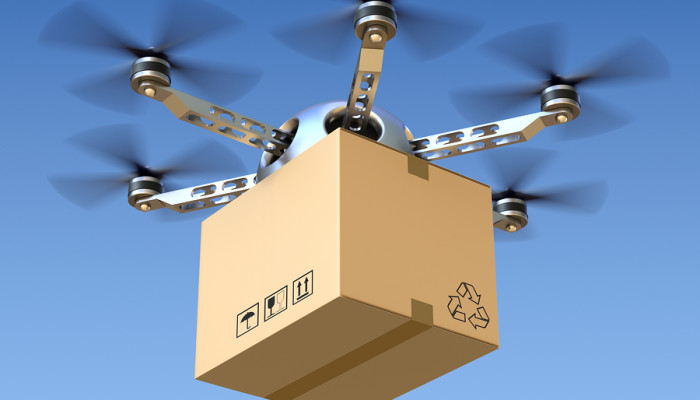The last-mile delivery is a metaphor that represents the movement of goods from the hub (fulfillment center) to the final destination (customer). It is the final leg of the complete journey of the good before it reaches the customer.
It is also known as ‘The Moment That Matters’.
Since it is an important touch point in the customer’s journey with the company, it becomes extremely important to delight the customer during the moment that matters and lock them in as a loyal customer in the long run.

Breaking Down the Last Mile Delivery Challenges
Any company that is involved in managing the supply chain or logistics understands that the complexities are numerous and specifically the last mile delivery is not an easy problem to solve.
Last mile delivery is the most important yet least efficient leg of the supply chain. Even the giants like Amazon and others have still not been able to solve the last mile complexity and are always experimenting to find the sweet spot.
The last mile piece usually involves around 30% of the total logistics cost yet there are plenty of issues with it:
Poor Infrastructure: Last mile is loaded with challenges like city traffic in the urban areas and longer journeys in the remote areas. Poor infrastructure in the developing countries adds to the woe involving more time and cost, thus impacting the unit economics.
B2B vs B2C Deliveries: The problem for the consumer delivery is further compounded as B2C deliveries often involve a single package per delivery whereas there are large volumes for B2B deliveries. Driving around in an urban area doing B2C deliveries translate into higher fuel costs.
Type of Goods: In addition to these, another key variable is the type of items being carried. perishable or non-perishable, toxic substance or flammable items all add to the challenges.
Customer Nuances: E-commerce industry faces another set of problems with last-mile delivery as their online sales have increased substantially over the past few years. Factors like incorrect address, difficult to find locations, no parking available, no one available at home to receive the order, change in mind – no longer requires the order, likelihood of returns and many other issues, all add up to the cost and time involved in an already competitive exercise.
Why Does It All Matter?
Creating a loyal customer base is crucial to any company’s success and it’s important to study and understand the needs and wants of your target customer base. One such need in today’s world is the ‘Instant Gratification’.
The likes of Uber have raised the expectations of the consumer and made features like real-time tracking an industry standard which were considered a premium earlier. eCommerce consumers don’t like waiting since the internet has conditioned them for instant gratification.
While last-mile delivery is the least fun part of your business, it is still the most important part of your business. Delight the customers during the last mile delivery and they will be your advocates.
Solving the Last Mile Delivery Challenge
Customer Proximity: Traditional logistic networks usually have few facilities and if there are more distribution centers across the target geography it increases the proximity to the customers. With the focus on highest concentration places where customers are located, both delivery and return time is reduced and it saves money otherwise burnt in fuel.
Customer Expectations: To create a happy customer base, meeting the customer expectation with timely delivery is the number one factor. Unhappy customers leave negative reviews and have a huge impact on the sales of online e-commerce stores.
Customer Communication: Keeping the customer in the loop with timely communication helps create a relationship with the customer. Acknowledging the customer about their order and informing them when the driver starts or is about to reach, ensures that the customer is home for the first time delivery.
Real-time Visibility: Today’s technology help businesses provide an Uber-like experience to their customers. Platforms are equipped with features to provide real-time updates to all stakeholders concerning their order. The last leg of the complex logistics run is most crucial and with real-time tracking, customers have the complete visibility into their order.
Optimization Techniques: Feature like route optimization consider multiple variables to come up with an optimal route for the drivers. Algorithms ensure that drivers complete most deliveries in the least amount of time by computing a vast number of variables. Routing variables include driver availability, location proximity, delivery windows, traffic condition, local regulations, minimum and maximum order load, weight capacity, among others.
Driver availability, location proximity, traffic condition, weight capacity are key routing variables.
Convenient Lockers: Placing lockers at convenient locations like near malls, post offices, etc give an option to the customers to pick up their order directly from the lockers at their convenient time, using a barcode scanner or a unique key sent by the company.
Autonomous Vehicles: Drones might just be the future of deliveries, even though authorities have considerable concerns about its usage in urban areas. Drones will make it possible to do deliveries in much lesser time avoiding traffic and taking a much shorter route in most cases. Drones are not bound to transport infrastructure, thus have the capability to save time and money.

The e-commerce industry and a number of online orders are bound to grow even further as the developing world jumps on the bandwagon. So while there is no straightforward solution to the last mile delivery challenges however rapid innovation and evolving technology will help companies optimize the supply chain to keep up with the customer expectations.